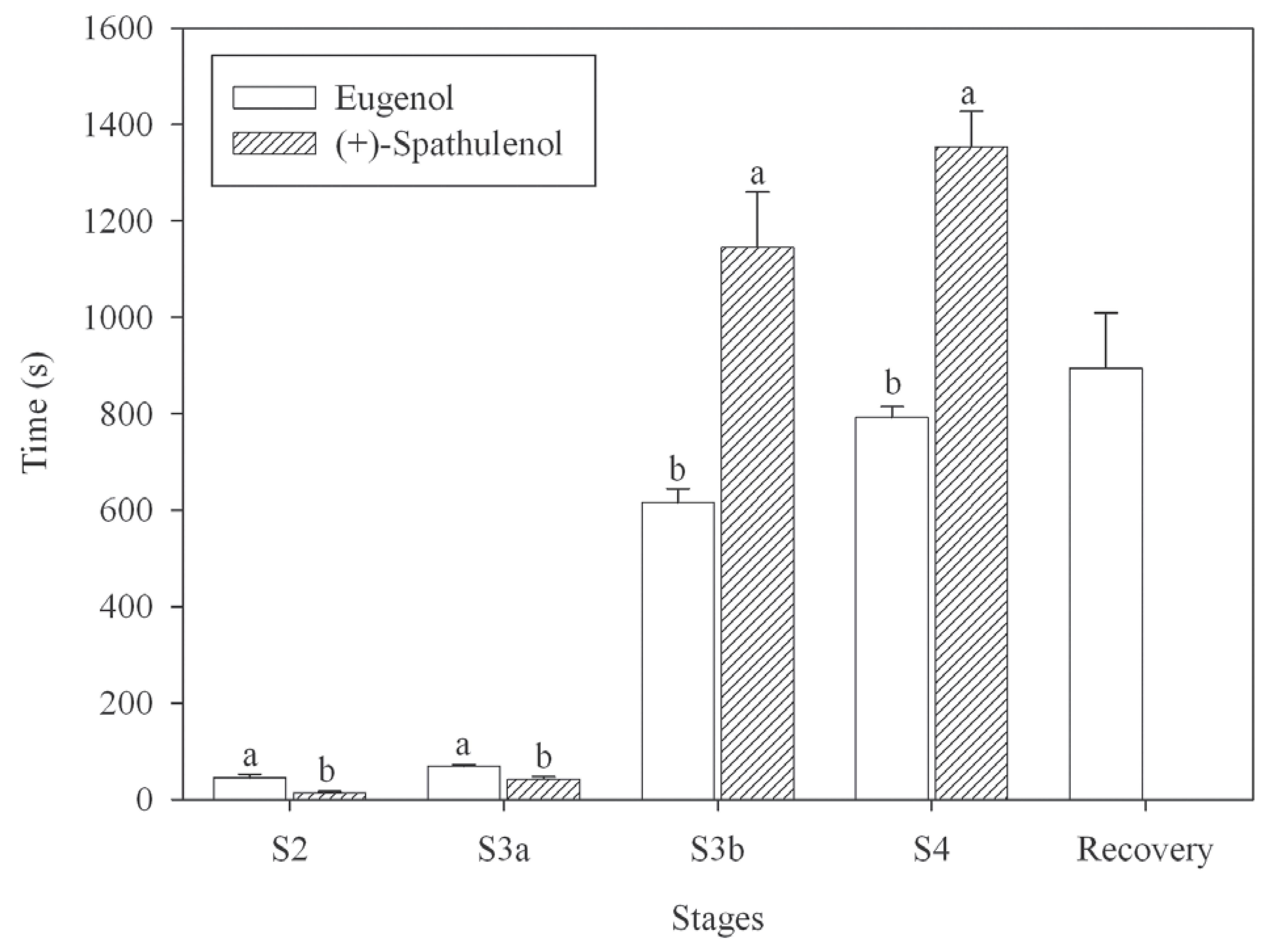Este trabalho tem como objetivo determinar a eficácia do óleo essencial deA. gratissima como anestésico para jundiás, bem como realizar o fracionamento bio-guiado do óleo essencial a fim de isolar os compostos responsáveis pelos efeitos observados. Os peixes foram submetidos ao banho-anestésico com óleo essencial, suas frações e compostos isolados para determinar o tempo de indução e recuperação da anestesia. O eugenol (50 mg L-1) foi utilizado como controle positivo. O óleo essencial deA. gratissima promoveu anestesia em concentrações de 300 a 900 mg L-1. Os peixes apresentaram contrações musculares involuntárias durante indução e recuperação. Com o fracionamento bio-guiado do óleo essencial foram obtidos E-(-)-pinocanfona, (-)-óxido de cariofileno, (-)-guaiol e (+)-espatulenol. A E-(-)-pinocanfona promoveu os mesmos efeitos adversos observados com o óleo essencial. (-)-Óxido de cariofileno, (-)-guaiol e (+)-espatulenol demonstraram apenas efeitos sedativos nas concentrações proporcionais ao óleo essencial. O (+)-espatulenol (51.2 mg L-1) promoveu anestesia profunda sem efeitos adversos. Uma maior concentração de (+)-espatulenol e menores quantidades ou ausência deE-(-)-pinocanfona poderiam contribuir para melhorar a atividade anestésica e segurança do óleo essencial de A. gratissima. O (+)-espatulenol apresentou potente atividade sedativa e anestésica em jundiás, e poderia ser considerado um composto viável para o desenvolvimento de um novo anestésico.
anestesia; (-)-óxido de cariofileno; E-(-)-pinocanfona; (-)-guaiol, jundiá; (+)-espatulenol


